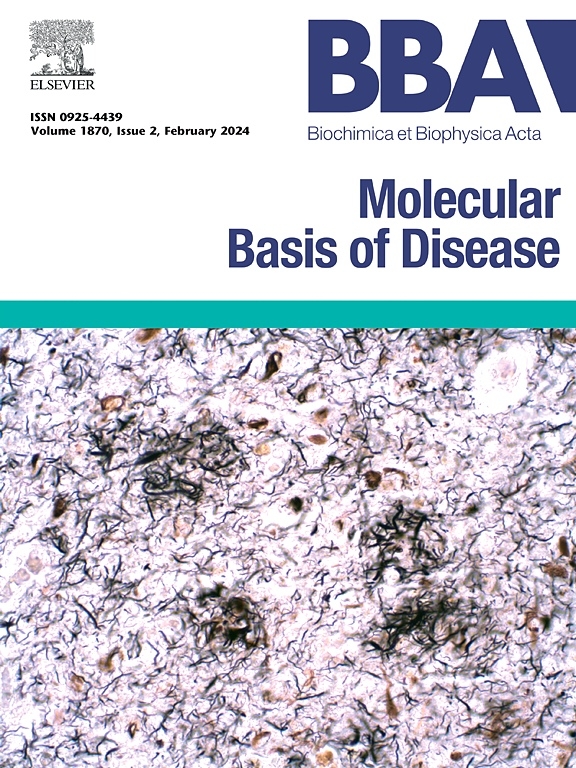Programmed cell death protein 5 inhibits hepatocellular carcinoma progression by inducing pyroptosis through regulation of TGF-β/Smad2/3/Snail pathway
IF 4.2
2区 生物学
Q2 BIOCHEMISTRY & MOLECULAR BIOLOGY
Biochimica et biophysica acta. Molecular basis of disease
Pub Date : 2025-01-28
DOI:10.1016/j.bbadis.2025.167696
引用次数: 0
Abstract
Background
Programmed cell death protein 5 (PDCD5) is involved in apoptosis and is regarded as a tumor suppressor in various tumors. However, its role and underlying molecular mechanisms in hepatocellular carcinoma (HCC) remain unclear.
Methods
PDCD5-overexpressing cell and xenograft tumor models were developed. Cell Counting Kit-8, 5-Ethynyl-2′-deoxyuridine, wound healing, Transwell, flow cytometry, immunohistochemistry, and hematoxylin-eosin staining were employed to explore the effects of PDCD5 on HCC cell behaviors and tumor growth. The enzyme-linked immunosorbent assay and western blot were used to detect pyroptosis-related marker levels. The molecular mechanisms underlying PDCD5's role in HCC were investigated through transcriptome sequencing and coimmunoprecipitation. SRI-011381, a TGF-β signaling activator, was applied to evaluate the impact of PDCD5 in modulating the TGF-β/Smad2/3/Snail pathway.
Results
PDCD5 expression was reduced in HCC cells. Overexpression of PDCD5 inhibited HCC cell proliferation, migration, invasion, and xenograft tumor growth. Additionally, PDCD5 overexpression promoted apoptosis and pyroptosis, with corresponding increases in inflammatory factors and Caspase-1, GSDMD, and NLRP3 protein levels. Mechanistically, PDCD5 bound to receptor-regulated Smads (Smad2/3), inhibiting the TGF-β pathway. Treatment with the TGF-β pathway activator SRI-011381 significantly counteracted the inhibitory effects of PDCD5 overexpression on HCC progression.
Conclusion
Our findings suggest that PDCD5 impedes the progression of HCC by promoting pyroptosis via regulation of TGF-β/Smad2/3/Snail pathway, which could be a possible therapeutic target for HCC.
求助全文
约1分钟内获得全文
求助全文
来源期刊
CiteScore
12.30
自引率
0.00%
发文量
218
审稿时长
32 days
期刊介绍:
BBA Molecular Basis of Disease addresses the biochemistry and molecular genetics of disease processes and models of human disease. This journal covers aspects of aging, cancer, metabolic-, neurological-, and immunological-based disease. Manuscripts focused on using animal models to elucidate biochemical and mechanistic insight in each of these conditions, are particularly encouraged. Manuscripts should emphasize the underlying mechanisms of disease pathways and provide novel contributions to the understanding and/or treatment of these disorders. Highly descriptive and method development submissions may be declined without full review. The submission of uninvited reviews to BBA - Molecular Basis of Disease is strongly discouraged, and any such uninvited review should be accompanied by a coverletter outlining the compelling reasons why the review should be considered.

 求助内容:
求助内容: 应助结果提醒方式:
应助结果提醒方式:


